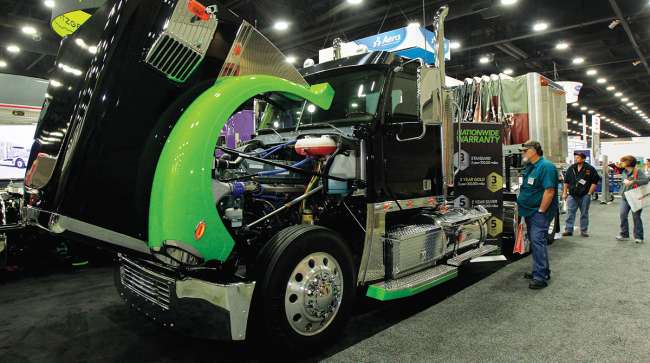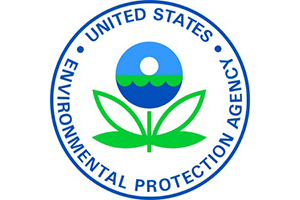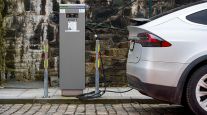Senior Reporter
EPA to Issue Rulemaking Repealing Phase 2 Rule for Glider Kits

The Environmental Protection Agency is targeting glider vehicles, glider engines and glider kits for repeal under the portion of the agency’s greenhouse gas Phase 2 emissions standard that covers them.
The Obama administration made Phase 2 a final rule from EPA and the National Highway Traffic Safety Administration in October 2016. The rule mandated that rebuilt engines installed in gliders satisfy emission standards in the year they were assembled applicable to new motor vehicle engines.

But late last month, EPA notified the Office of Management and Budget of its plans to issue a proposed rule for repeal.
Glider kits mix refurbished older components, including transmissions and pre-emission-rule engines, with a new frame, cab, steer axle, wheels and other standard equipment. Gliders are approximately 25% less expensive than new trucks, which can be a significant cost savings for small businesses and owner-operators.
Glider assemblers initially said Phase 2 — due to take effect Jan. 1 — would effectively shut down their industry. But this summer they filed a petition for reconsideration of the final rule.
“We support a narrow, targeted approach to address the regulatory overreach on glider kits, such as what we anticipate is being reviewed by OMB. There is a legitimate need and purpose for glider kits, and the final Phase 2 rule went too far in requiring that they meet the standards of the year of installation, which would harm the engine-remanufacturing industry,” said Laurie Holmes, senior director of environmental policy at the Motor & Equipment Manufacturers Association.
Also, Phase 2 capped the number of kits able to be built in 2017 and slashed to 300 the allowable nonconforming kits in a given year after the rule’s implementation.
“In light of the plan to repeal, we do not believe that the Jan. 1 deadline will impact our company,” Joe DePew, general counsel at Fitzgerald Glider Kits, told Transport Topics.
Fitzgerald is a leading glider assembler that offers kits from Daimler Trucks North America and Paccar Inc. Fitzgerald estimates that industrywide about 10,000 gliders are built each year.
“EPA never did any glider tests or studies, they simply compared current emissions standards to pre-2001 emissions standards” in developing Phase 2, DePew said. “EPA also ignored the impact of its ultra-low-sulfur diesel fuel standards, which were fully phased in by 2010 and, according to EPA, reduced harmful emissions from both on road and nonroad diesel sources by more than 90%.”
Those emission tests on gliders now are underway to “re-verify their substantial and disproportionate emissions contributions within the transportation sector,” said Glen Kedzie, energy and environmental affairs counsel for American Trucking Associations.
“Gliders do provide the benefit of somewhat higher miles per gallon, but they also create a lot of horrible pollutants, including nitrogen oxide and particulate matter. The industry has worked 20 years to get those emissions down to their low levels now,” said Mike Roeth, executive director of the North American Council for Freight Efficiency.
Also, changing Phase 2 would fly in the face of the Diesel Emissions Reduction Act, which requires EPA to distribute federal dollars to clean up older, higher-polluting diesel engines, Kedzie added.
DTNA said the move to rescind the glider kit provision would have no effect on how it will implement Phase 2.
“We will move forward according to the original GHG Phase 2 regulations,” said Paige Jarmer, DTNA’s corporate communications manager. “We are continuing to sell glider kits to qualified assemblers in accordance to GHG Phase 2 regulations.”
Kenworth Truck Co., a unit of Paccar Inc., declined to comment.
Other truck makers and glider assemblers did not respond to a request for comment.
Phase 1 of the GHG rule took effect in 2014. As of Jan. 1 this year, Phase 1 toughened emission limits of carbon dioxide and other greenhouse gases, and required truck makers to produce medium- and heavy-duty trucks with improved fuel mileage.
The truck and engine sections of Phase 2 will continue to be rolled out in 2021, 2024 and 2027.




